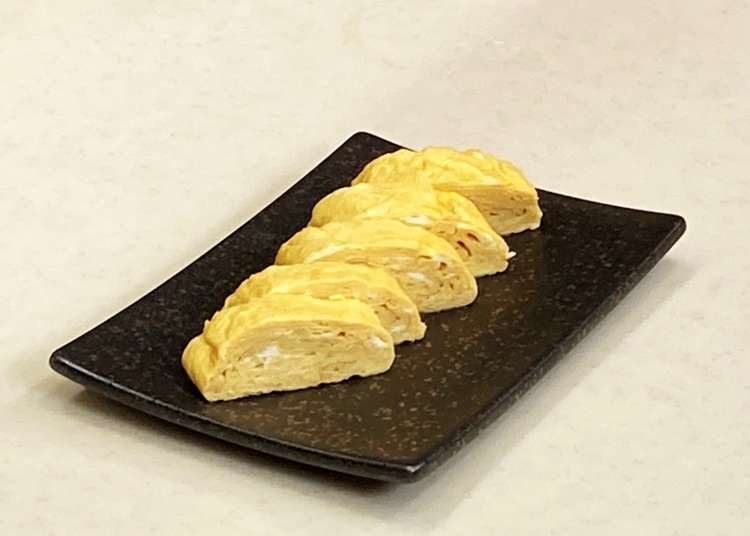
Even if you can’t easily visit Japan at the moment, you can still enjoy Japanese food at home, thanks to Mr. Toshihiro Minami, a cooking class instructor who shares his recipe for “Dashimaki Tamago.”
In addition to learning which ingredients you’ll need, you’ll also learn to make bonito soup stock, which can be used to make a variety of Japanese foods. Even beginners can enjoy this easily prepared authentic Japanese dish!
Dashimaki Tamago, a classic Japanese home-cooked dish that’s delicious even when served cold

Dashimaki Tamago is made by mixing soup stock with beaten eggs and frying them.
“Dashi,” made from dried bonito and kelp, is a basic ingredient for traditional Japanese food and is registered as a UNESCO intangible cultural heritage.
It typically combines sweet, acidic, salty, and bitter accents into one “umami” flavor that’s both rich and mellow, but the seasoning of Dashimaki Tamago varies by region.
In the Kanto area, the eggs tend to be seasoned with soy sauce and sugar, but here we will introduce a Kansai-style recipe, based on the taste of dashi.
Very easy! Let’s make bonito stock
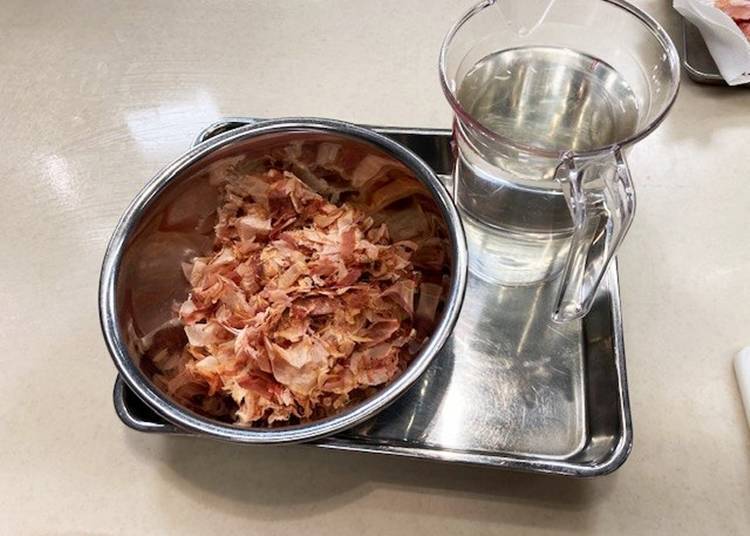
Katsuo dashi Ingredients (serves 2)
・Katsuobushi (bonito flakes) 30g
・Water 1ℓ
*Katsuobushi can be somewhat challenging to find outside Japan. While they may be found at Asian supermarkets, they can also be ordered via websites like NIHON ICHIBAN, which ship worldwide.
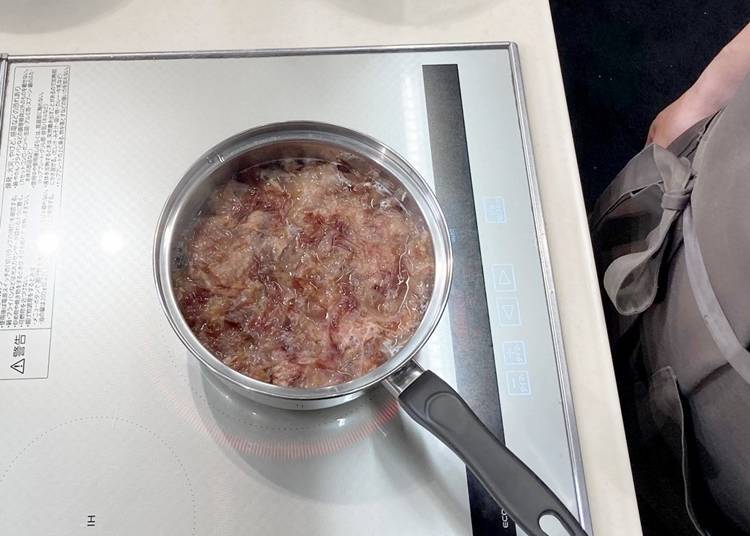
1) First, make the bonito stock. Put water in a pot, heat until just before boiling, and add the dried bonito flakes. Immediately reduce to low heat, submerge the flakes gently with chopsticks, and simmer for about 1 minute. Please note that boiling for longer may result in a different taste and clarity.
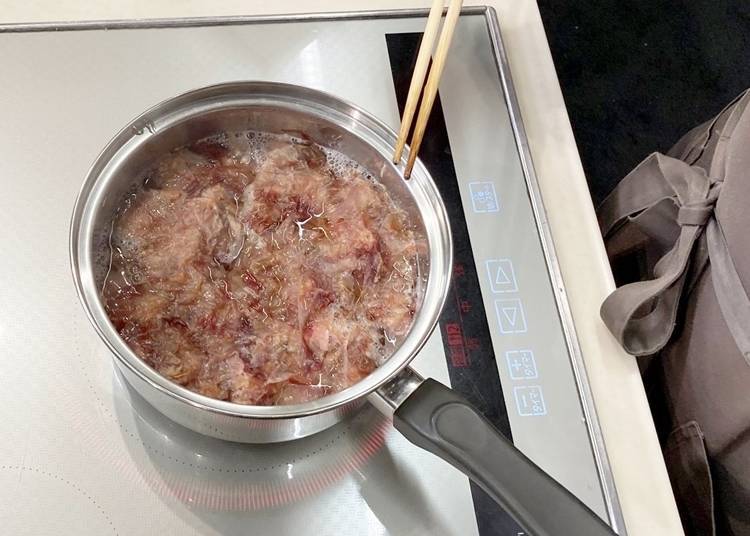
2) Turn off the heat and let stand for about 10 minutes until the dried bonito sinks to the bottom of the pot. If you stir it, the flakes will give off an unpleasant taste and make cloudy stock, so avoid disturbing it.
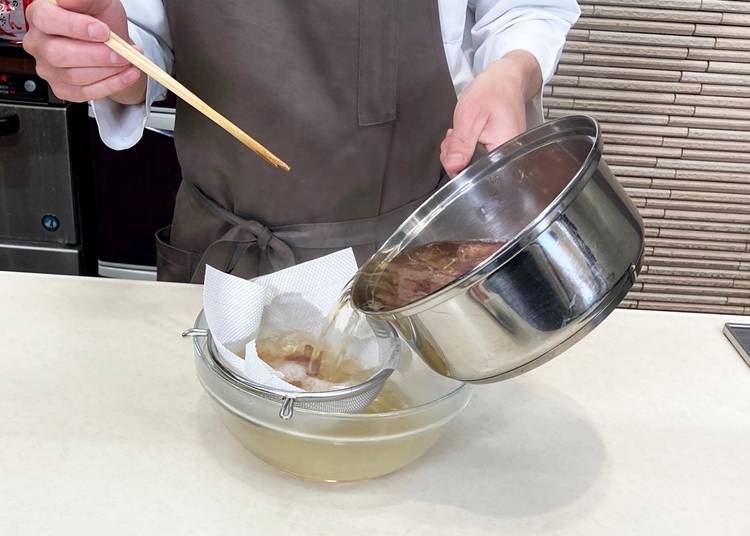
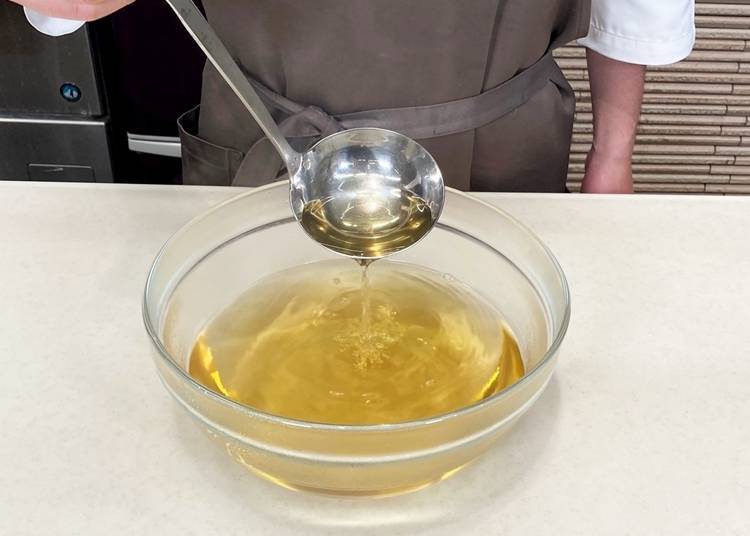
3) Put a colander and a paper towel in a bowl and pour the stock from the pot to complete the process. Be careful not to squeeze the paper towel as it may affect the flavor.
You can buy dried bonito overseas at Japanese supermarkets, but if you can’t get it, you can substitute it with boiled, dried tomatoes, which are rich in glutamic acid. Ketchup is also recommended and is said to have similar umami ingredients to bonito flakes. Be sure to use ketchup that has been cooked to remove its acidity.
High heat makes it fluffy. Try your hand at making Dashimaki Tamago!
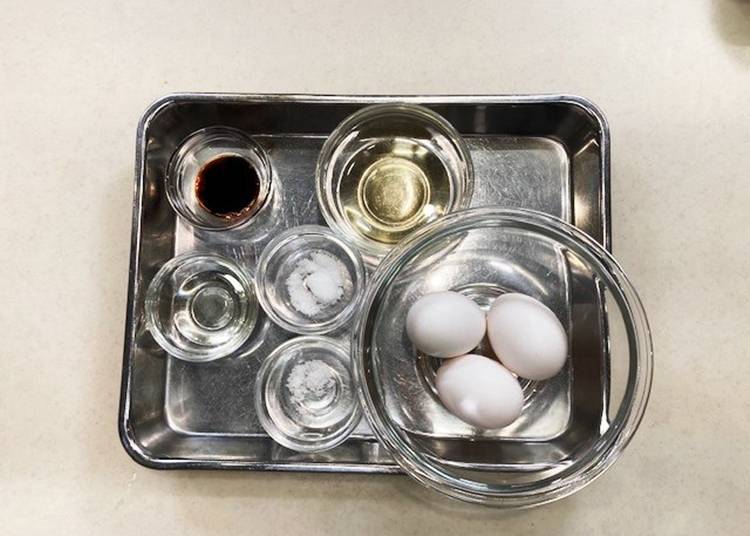
Dashimaki Tamago Ingredients (serves 2)
・3 eggs
・Appropriate amount of salad oil
・3 tablespoons of bonito stock (45 ml)
・1 teaspoon of soy sauce
・1 teaspoon sugar
・A pinch of salt
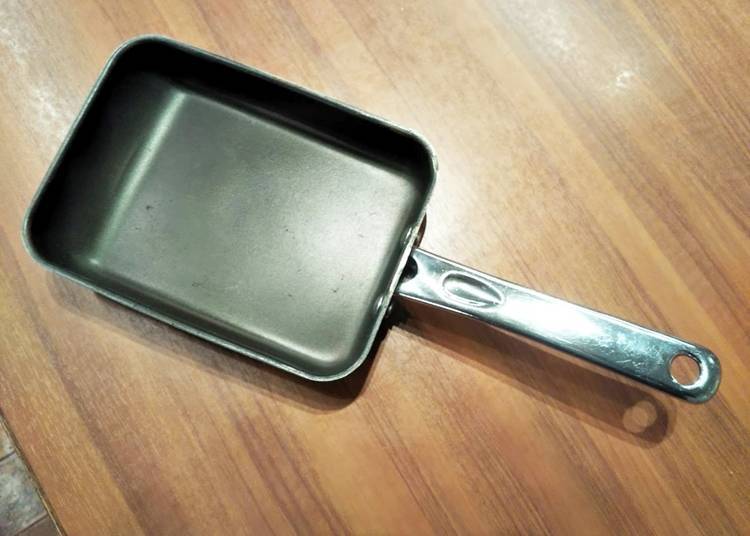
An omelet pan is used to make omelet rolls in Japan. A small frying pan can be used instead.
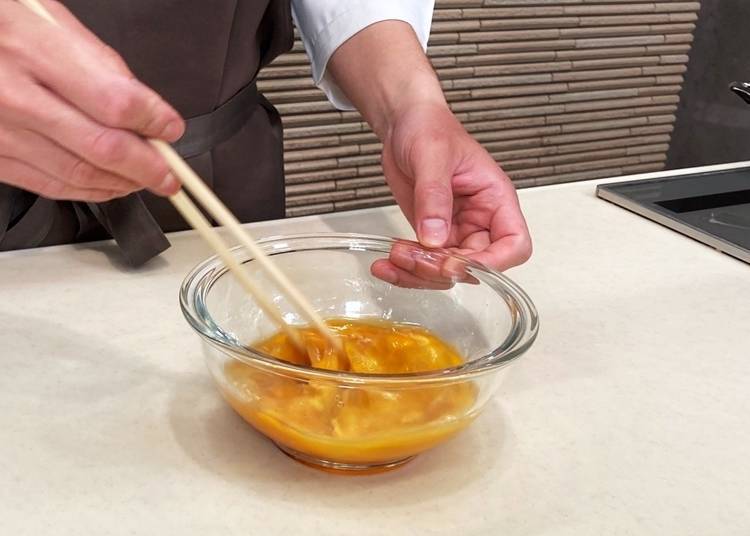
1) Make Dashimaki Tamago. Break the eggs into a bowl, add dashi, soy sauce, sugar, and salt, and mix gently to break up the egg whites. When mixing, be careful as the texture will be negatively affected if you overmix or mix in too much air.
2) Apply a thin layer of salad oil on an omelet pan with a paper towel and heat over medium heat. With the tip of the chopsticks covered in the egg mixture, touch them to the pan to see if the egg hardens to know if the pan is hot enough.
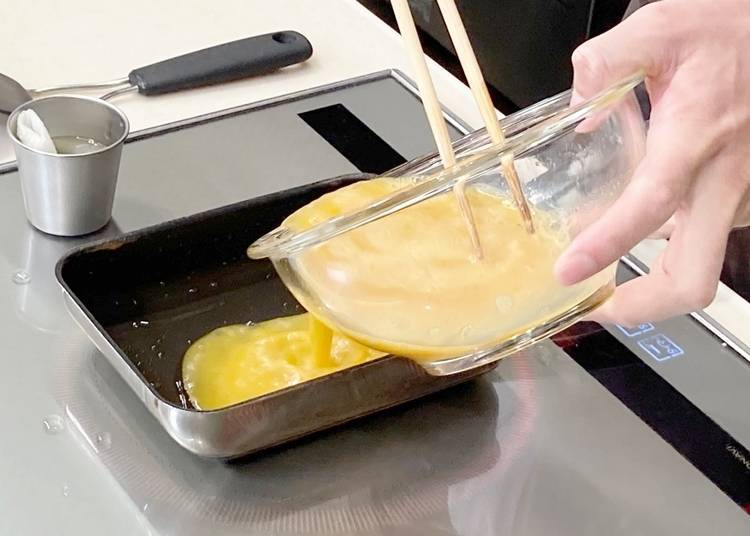
3) Pour 1/4 of the egg into the warm pan and spread it evenly. If bubbles appear, poke them with the chopsticks. If the heat is too low, the eggs won’t become fluffy enough, so be sure to maintain medium heat. If it looks like the eggs will burn, move the pan away from the heat to adjust.
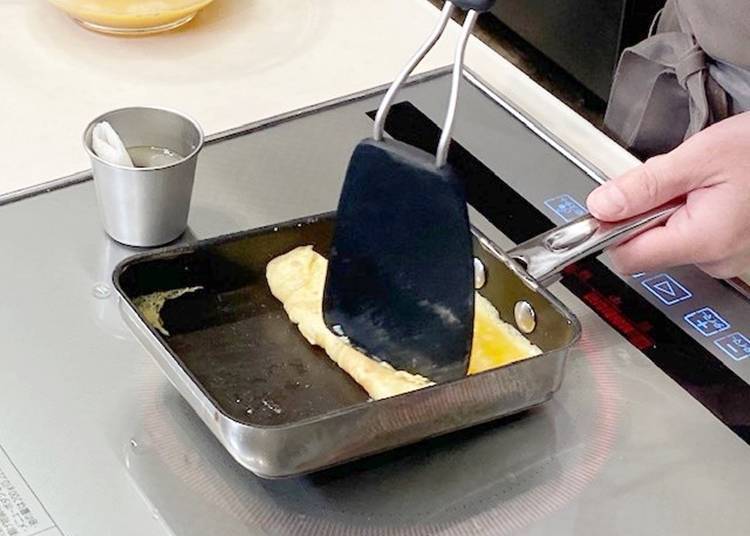
4) When the edge of the egg has hardened, and the whole is half-boiled, peel back the edges with chopsticks and fold the egg from back to front with a spatula. When the egg is completely solidified, it will not stick together even when rolled, so please be sure it’s rolled while still soft-boiled (except for the edges).
When using a standard frying pan, you can achieve a square shape by folding the sides as well.
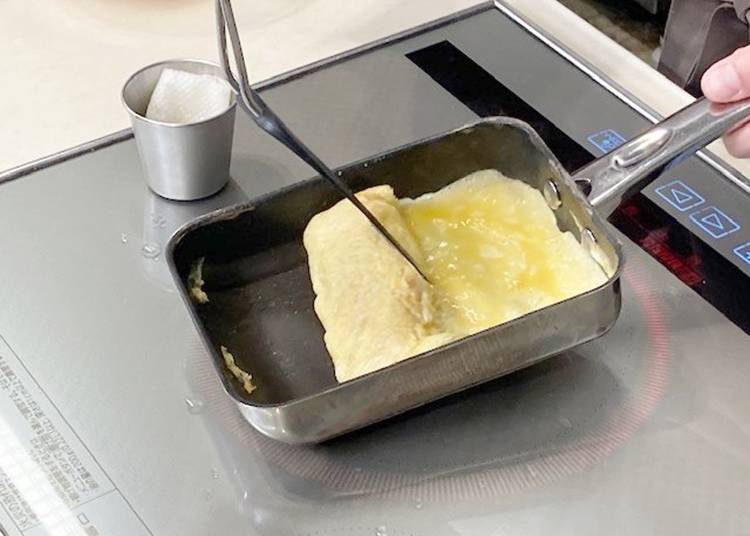
5) Add oil to the empty pan space as before, and slide the omelet to the back. Pour 1/3 of the remaining egg liquid into the empty space in the front. Lift the omelet a little with the spatula, and tilt the frying pan to get more egg under the omelet. When it’s half-boiled, roll it from back to front as before.
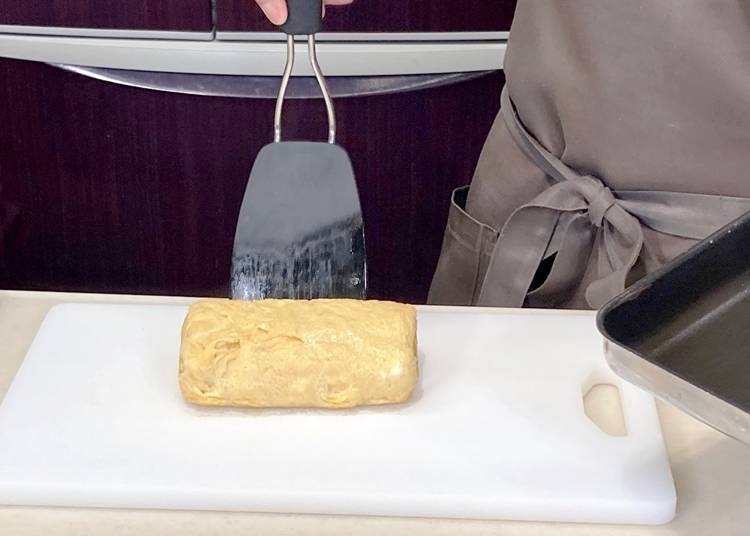

6) After doing the same for the remaining 2/3 of the egg mixture, use the edge of the frying pan to shape it. Once prepared, place it on a cutting board, and when cooled, cut it into easy-to-eat pieces.
When shaping, you can also wrap the Dashimaki Tamago in plastic wrap to mold it, and then let it cool for a smoother look. The dish is delicious as is, or with soy sauce or mayonnaise.
The dashi makes this a very moist omelet. It may seem difficult to roll, but the eggs will stick together quickly and you don’t have to roll them perfectly. Don’t be afraid to make mistakes!
Recipe supervisor/cook introduction
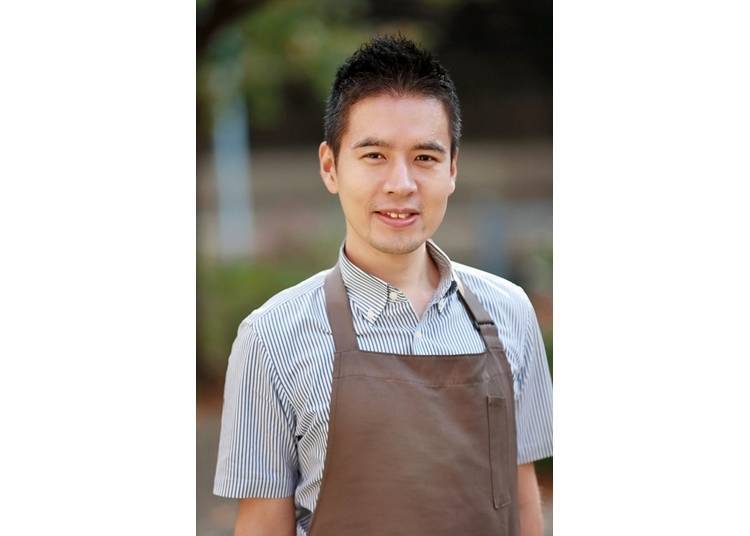
Toshihiro Minami is the manager of the “Osaka Delicious” cooking studio. While working in another profession, he attended a school for working adults and changed careers, becoming a cooking class instructor. While serving as an instructor at Osaka Delicious, he has also developed recipes, assisted in cooking, and made TV appearances. In addition to Japanese food, he also teaches students how to cook a wide range of foods including Western and Chinese cuisine.
http://osakadelicious.jp/
Text by: Efeel
*The information in this article is accurate as of July 2021.
English translation by Gabriel Wilkinson
- Area
- Category
*Prices and options mentioned are subject to change.
*Unless stated otherwise, all prices include tax.
Popular Tours & Activitiess
Recommended places for you
-

Hachiko
Japanese cuisine
Umeda, Osaka Station, Kitashinchi
-

KITCHO Main store
Japanese cuisine
Umeda, Osaka Station, Kitashinchi
-

MINOKICHIHoteruhankyuintanashonaru
Japanese cuisine
Umeda, Osaka Station, Kitashinchi
-

Ichii
Japanese cuisine
Namba, Dotonbori, Shinsaibashi
-

Kappo Kishu
Japanese cuisine
Arashiyama, Uzumasa
-

Asai
Japanese cuisine
Namba, Dotonbori, Shinsaibashi
-
Ad

Recharge and Relax with a Healing Getaway at Kamenoi Hotel Toba
-
Ad

Discover Timeless Beauty: Kimono-en, a Web Magazine Exploring the Spirit of Kimono
-

New Way to Reach Koyasan! Ride Nankai's 'GRAN Tenku' for a Heavenly Journey
by: Guest Contributor
-

Everything You Need to Know About teamLab Biovortex Kyoto (2025 Insider Guide)
by: Wemmy Chau
-

Kyoto's Hidden Treasures Open This Winter! Enjoy Exclusive Access to 15 Rare Cultural Sites (Jan-Mar 2026)
by: Guest Contributor
-

Celebrate a Dreamy Barbapapa Christmas at JR Osaka Station's Twilight
by: Guest Contributor
Inspiration for Accommodations
-

Spacious Family Hotel in Namba: 20 Comfortable Stays for Family Fun
-

Charming Hotels to Enjoy the Spectacular Views of Arashiyama's Autumn Leaves from Your Room
-

Experience Stunning Views of Osaka Castle from Private Spaces: Top Hotels Near Osaka Castle
-

Recommended by Visitors! Arashiyama's Best-Rated Hotels
-

Family-Friendly Universal Studios Japan Hotel with Excellent Access
-

Enjoy a Comfortable Stay in Osaka! 10 Hotels with Convenient Airport Shuttle Services
-

Top 10 Recommended Hotels Near Namba Station with Great Access
-

Enjoy Night Views from Your Room! Recommended Hotels in Namba Area
-

Enjoy Kaiseki in Kyoto: 6 Must-Visit Restaurants in Gion
by: Guest Contributor
-

Inside Kobe Tower: Fun Things to Do at the Symbol of Kobe
-

5 Must-Visit Nara Temples and Shrines: Discover the Timeless Beauty of Japan's Ancient Capital
by: WESTPLAN
-

Nikujaga Recipe: A Deliciously Simmered Meat-and-Potatoes Japanese Classic!
-

Autumn in Japan 2025: Fall Foliage Forecast & Where to Enjoy the Colorful Leaves (+Tour Info)
-

Manners & More: What Exactly Is Japan's 'Kaiseki Cuisine' - And How To Order?
by: WESTPLAN
- #best gourmet Osaka
- #things to do Osaka
- #what to do in kyoto
- #what to bring to japan
- #best gourmet Kyoto
- #new years in Osaka
- #what to buy in nanba
- #Visiting Osaka
- #onsen tattoo friendly arima
- #daiso
- #Visiting Kyoto
- #best japanese soft drinks
- #japanese fashion culture
- #japanese convenience store snacks
- #japanese nail trends












